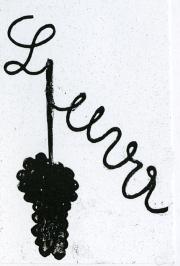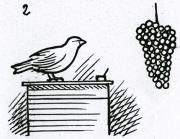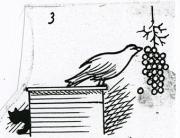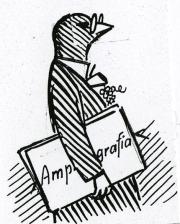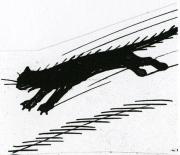The grapes
The Grapepecker sparrow, has always been very passionate about grapes (dwg.2). Stories tell that when the painter Zensi, painted grapes in a basket, the sparrow mistook them for real grapes, and ran to peck it (dwg.3). After pecking his whole life, Grapepecker gained the title of ampelography professor. No worries: ampelography means vine and grape description. One day, Grapepecker went to his desk to have a linguistics class (dwg.4). A nice bunch of grapes was dangling in front of the desk. Grapepecker started to tweet that that was the vine’s fruit. As you can see, it’s a vine-stock twig, called grape stalk, scattered in smaller twigs, on top of which the grapes are attached. “Now, all of them evenly, just like nursing children, they have their mouths attached on grape stalk, and they suck and fill up, each gaining their own substance, growing and becoming larger and more colourful”. Bartoli wrote this passage. Two or more bunches together, make a dangler. Each grape croquette that makes up the bunch, is called a gather. The grains that, by uniting with the stalk make up the bunch, are called grapes or acinus. The stem, thanks to which the grape stays attached to the stalk, is called stem. I bet that few know how the outer skin that wraps the grape is called! Peel! No; its real name is “flocine”. The squashy and sugary substance is called pulp and the small grains are called grapestones. The sparrow began pecking the grapes one by one, and then concluded saying that if the bunch had a few grapes left it was called stem and, if it remained with no grapes, it was to be called stalk. While the sparrow strongly flew down from his desk, a cat caught him, (dwg5&6) and, alas! that was the last peck for the poor Grapepecker professor.
